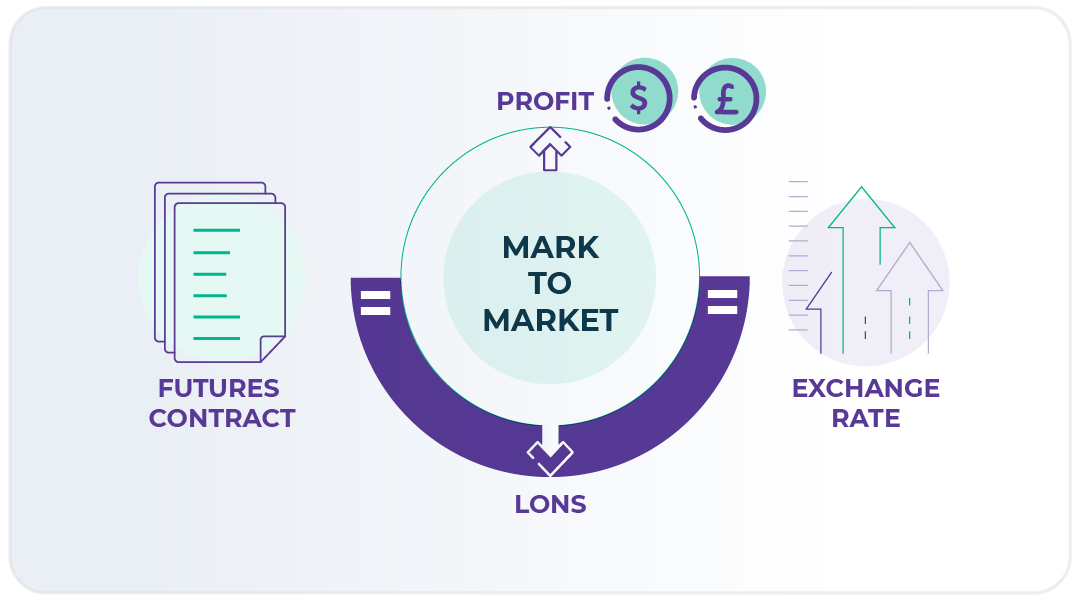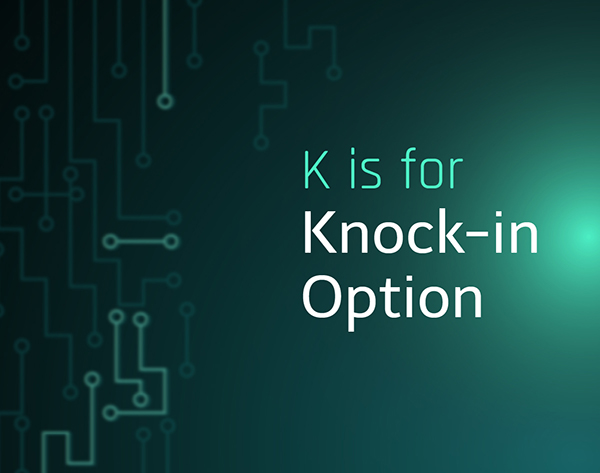Mark-to-market is the accounting process that measures the real-world value of foreign exchange trades. It shows whether you’ve made a profit or a loss on a trade and, in turn, whether your broker should credit your trading account or make a margin call.
Imagine you wanted to start speculating on the foreign exchange markets.
To do this, you’ll need to open an account with a broker and post initial margin — a percentage of the trade’s value which the broker sets.
One of initial margin’s main purposes is to act like a security deposit — the broker will use it to cover your losses if the market doesn’t go your way.
But in order to know whether you’ve made a profit or a loss, the broker must work out how much your trade is worth. And that’s where mark-to-market comes in.
Let’s say that, in February 2021, you buy a GBP/USD futures contract — a contract to exchange British Pounds for US Dollars for a pre-agreed exchange rate on X date.
The contract falls due on the 20 June 2021 and the exchange rate is 1.20, which means you get £1 for every $1.20.
Between February and June, it’s likely that the GBP/USD exchange rate will fluctuate. The reason for this is that the Dollar and the British Pound are both floating currencies — their exchange rate goes up and down based on supply and demand.
These market fluctuations will influence the value of your trade.
If the market exchange rate goes up, the value of your trade will also go up. This is because, since the exchange rate in the futures contract is lower than the market rate, you could exchange more Pounds than you’d get on the open market for the same amount of Dollars.
Mark-to-market will put a value on the amount by which your trade has appreciated, and the broker will credit your trading account with that sum.
By contrast, if the market exchange rate goes below the rate in the futures contract, your trade’s value will decrease. This is because you’d get fewer Pounds than you’d get on the open market for the same amount of Dollars.
Here, mark-to-market would work out a loss, which the broker will take out of the money in your trading account.
If the amount the broker withdraws takes your balance below initial margin, you’ll have to post maintenance margin — an amount that will bring the balance back to the right amount.

Some Facts
- Because they’re traded on exchanges, futures contracts have standard terms and sizes. There are three main contract sizes for futures in major currencies:
- Full, where you agree to trade 100,000 or 125,000 units of currency. This depends on the currency. Canadian Dollars, for instance, are traded in 100,000 units while Swiss Francs are traded in 125,000 units. Exceptionally, a full-size futures contract for British Pounds is for 62,500 units.
- Mini. These contracts are half the value of a full contract, that is 50,000 or 62,500 units
- Micro, which are typically one-tenth of a full-size futures contract
Most futures use the US Dollar as the quote currency. This means the exchange rate tells you how much you’d need in US Dollars to buy one unit of the other currency.
- Foreign exchange trades are marked to market on a daily basis at the end of the trading day. The exchange sets out the mark-to-market methodology, and this is specified in its rulebook and in the underlying contract for each trade.
- Mark-to-market is measured in ticks. This is the minimum amount you can lose or gain when the exchange rate moves.
A tick is usually 0.0001 per increment. So, on a full-size futures contract for 125,000 units, a 0.0001 movement means you earn or lose $12.50. Similarly, the tick for a contract with 100,000 units is $10, and the tick for a contract with 62,500 units is $6.25.
Want to know more?
- If you’re into tables and mathematical formulas, this video breaks down the typical mark-to-market methodology.
- Mark-to-market continues to apply daily until you close a trading position. To do this, you need to cancel it out. So, if you have a long position — that is, you’ve bought foreign exchange futures — you need to sell. And if you have a short position — that is, you’ve sold futures you don’t yet own — you need to buy. This article explains long and short trading positions and when you’d choose one or the other in more detail.
ALT21’s perspective:
“If you want to speculate on the forex markets, understanding mark-to-market can help you maximise your profits and keep your losses to a minimum with less effort. By looking at how the market exchange rate is fluctuating, you can adapt your trading position instead of having to buy or sell the underlying currency directly”


